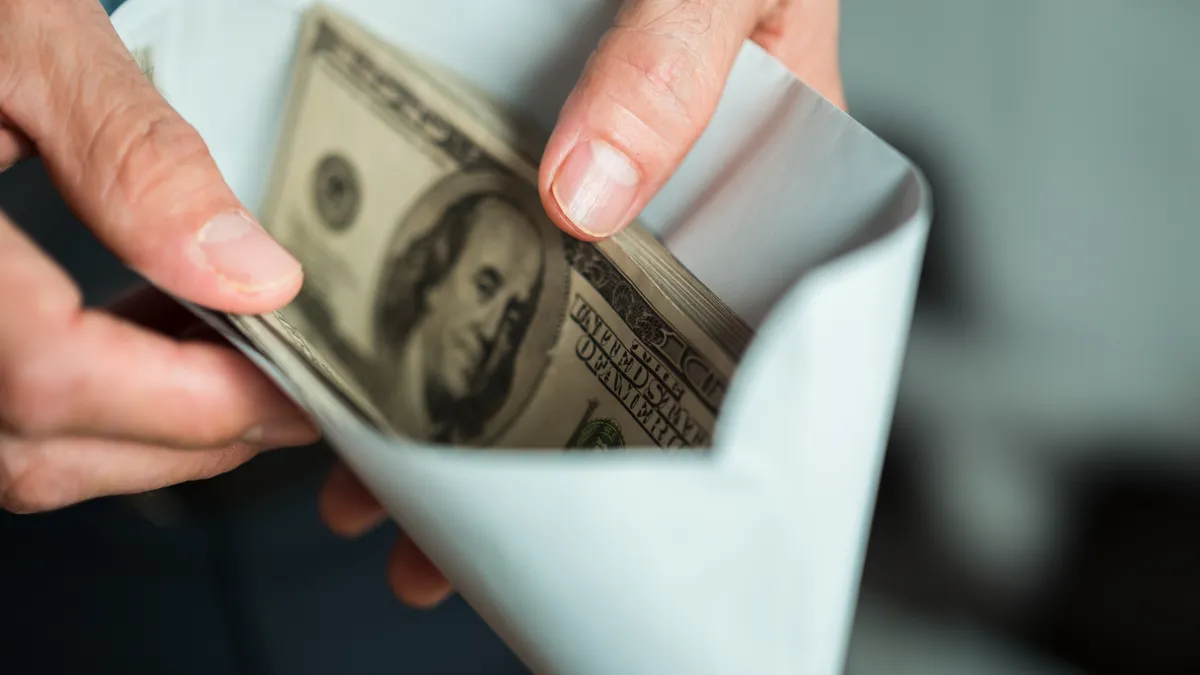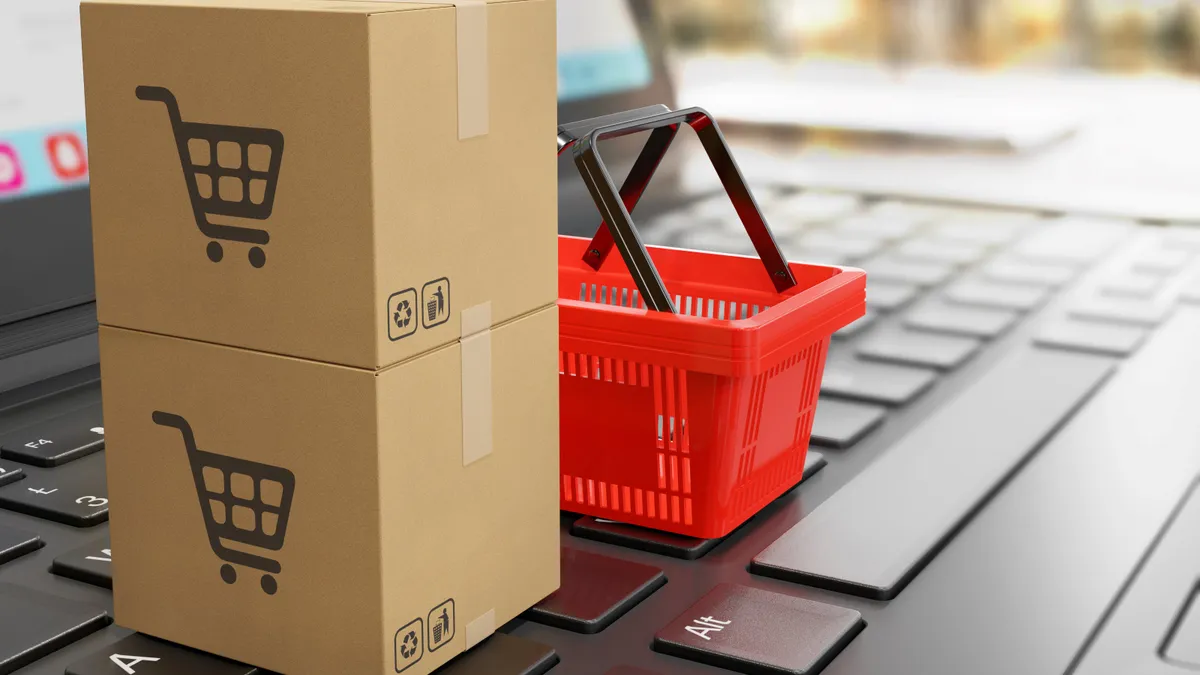Payment processor Fiserv and gift card company Blackhawk Network are betting some consumers’ preference for paying bills with cash will create demand for more bill-pay services at grocers, big box retailers and convenience stores.
The two companies announced last week they are working together to bring in-person bill-pay capabilities to more physical retail locations across the U.S. They aim to make the walk-in services simple by having consumers show a cashier a barcode on their phone to make a payment.
Fiserv and Blackhawk Network are wrapping up work on the barcode capability before the very first transaction can happen, said Brian Seemann, Fiserv’s senior vice president of biller solutions. The service is expected to be up and running in the second half of 2024, a Fiserv spokesperson said.
Their plan is to more than double the network footprint of CheckFreePay, Fiserv’s bill-pay processing subsidiary. That network currently includes 30,000 U.S. locations. By adding merchants that sell gift cards through Blackhawk Network to the CheckFreePay system, executives for the two companies envision that network growing to 60,000 retail locations in the U.S. by the latter half of next year.
Despite the ongoing shift to digital payments worldwide, Seemann and Blackhawk Network’s Brett Narlinger said there’s plenty of cash-preferring consumers they expect will take advantage of such options.
They include Gen Z consumers, a majority of which are using cash, said Narlinger, the head of global commerce at Blackhawk Network. He pointed to his own son’s use of cash to buy an Xbox gift card, which he immediately loaded onto his Xbox account for digital gaming credit. Nearly one-third of Gen Z has turned to “cash stuffing,” or using designated envelopes to set aside cash for specific expenses, according to Narlinger.
For restaurant servers or other workers who deal predominantly in cash, the in-person bill pay option provides “an exit ramp into the digital world,” Seemann said. “They can go make the funds usable without having to transact with the bank, to convert it into some other format to make the payments.”
The option also appeals to consumers who feel less secure sharing payment information in online settings, or letting a biller debit their checking account, Seemann said. It can be a much-needed option for those living paycheck to paycheck who might have to make a bill payment last minute, he said.
To be sure, as digital payment options have proliferated in recent years, consumers have increasingly turned to those methods to make payments, buy goods and send money. The number of CheckFreePay transactions processed last year declined 10% compared to 2021, according to figures on Fiserv’s website. A Fiserv spokesperson didn’t respond to a request for comment on that decline.
Meanwhile, the number of ATMs has also dropped for the third straight year, and a May Federal Reserve report noted consumer preference for cash has declined since 2016.
Blackhawk Network has big box retailer Target, grocers Publix, Giant Eagle, Meijer and Hy-Vee as well as convenience stores in its merchant network. Narlinger expects those companies will be eager to sign on, given the added foot traffic the bill-pay capability is poised to bring.
“We’ve just announced this and we’ll be talking to several of our large distribution partners who have serious interest in the space,” Narlinger said.
As Blackhawk Network works to get its merchant partners on board, “within the year, we certainly expect to see the transaction volume ramping up,” Seemann said, without elaborating.
To make a bill payment, consumers will bring up a scannable barcode on a smartphone or show the code on their printed bill to a cashier; that barcode will contain bill payment details. The consumer uses cash to pay the bill, with the billing and payment information moving through Blackhawk Network’s gift card platform to Fiserv, which will move the money and data to the appropriate biller. The customer will then get a receipt confirming the payment.
The creation of the scannable barcode is as key as the expansion of the location network, the executives noted.
“Instead of the consumer walking in and handing a physical paper bill to someone for them to identify the necessary criteria to key in – whether it be 10- to 16- or 20-digit account number, a dollar amount, a date, et cetera – all that's eliminated with the barcode scan,” Seemann said. That’s expected to result in improved accuracy and a faster experience for the consumer, he added.
By the second half of 2024, Seemann envisions more consumers pulling up barcodes on their mobile devices than bringing in paper bills.


















